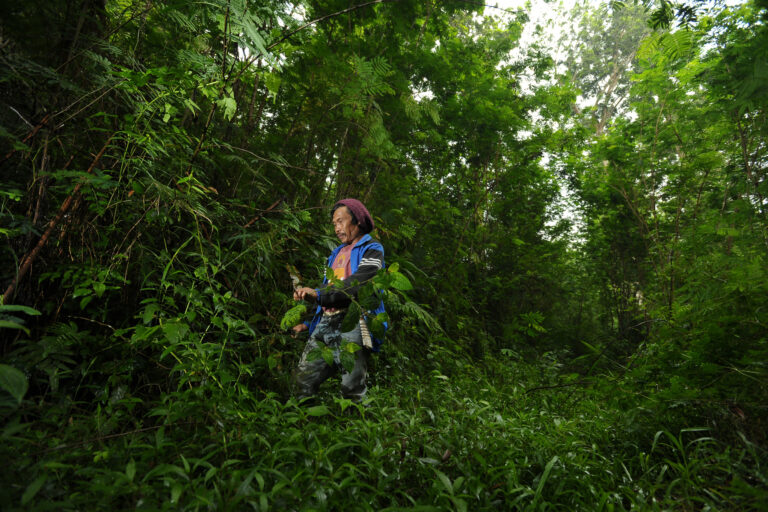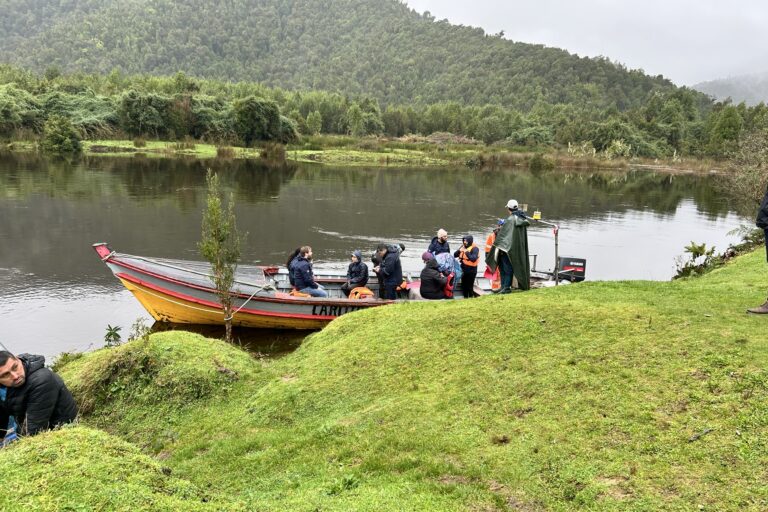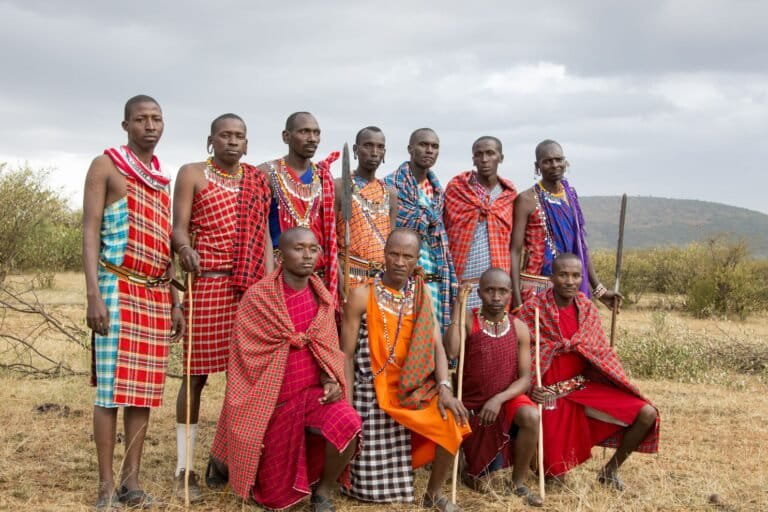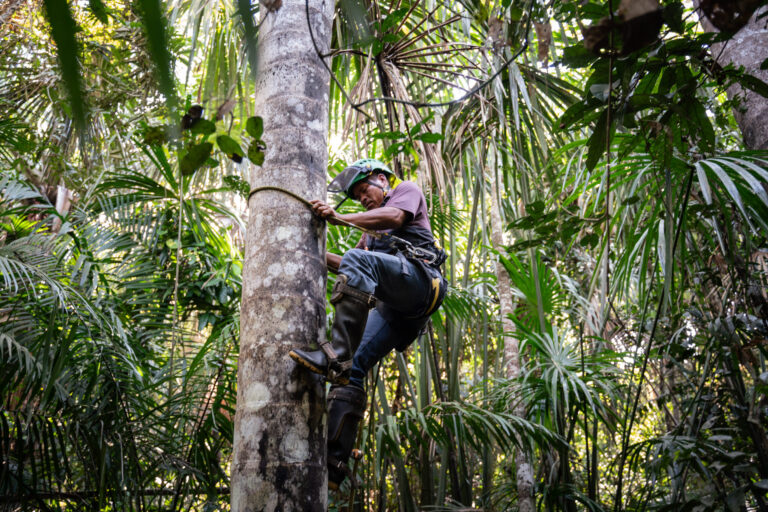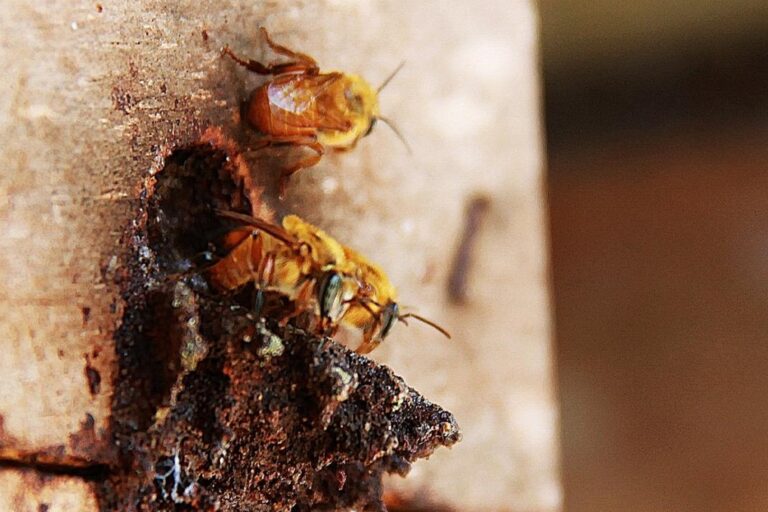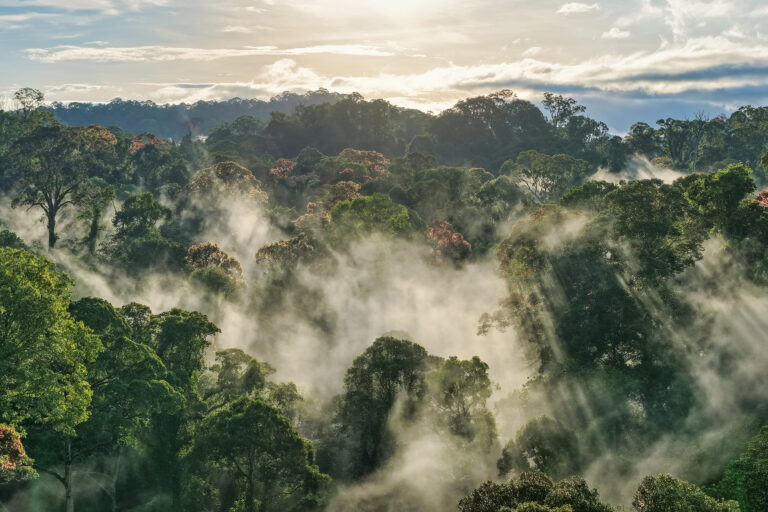- In separate incidents in November and December, tigers killed five people in Indonesia’s South Sumatra province.
- The recent increase in human-tiger conflict has surprised many people in the area, who say they have long had a harmonious relationship with the animals.
- Conservationists say a key driver of human-tiger conflicts is habitat degradation due development projects like roads, housing, plantations and mining.
PALEMBANG, Indonesia — A spate of recent tiger attacks on farmers in Indonesia’s South Sumatra province has renewed calls from experts to protect wildlife habitats from development projects that threaten to further fragment forests.
November and December 2019, saw a string of deadly conflicts between farmers and Sumatran tigers (Panthera tigris sumatrae) in the forest landscape that connects two mountains: Mount Dempo and Mount Fatah. According to local media reports, at least five area residents have been killed by tigers.
This recent uptick in human-tiger conflict has surprised many members of these forest communities, who say they have long had a harmonious relationship with the animals.
According to conservationists, a key driver of the increase of human-tiger conflicts is the widespread fragmentation and degradation of the animals’ forest habitats due to development projects such as road infrastructure, housing, plantations and mining.
The protected forest in the Mount Dempo landscape spans 28,000 hectares (69,000 acres), but has been degraded by human activities, particularly artisanal gold mining.
As a territorial predator, tigers require expansive forest environment to hunt and they hardly care about human-made zones, Hendra Gunawan, a conservation lecturer at Bogor Agriculture Institute (IPB) who also serves as an expert researcher at Indonesia’s environment ministry, told Mongabay-Indonesia in a recent interview.

Lack of natural prey in their habitats has also encouraged tigers to scavenge outside their territories, eventually encroaching onto farms and plantations in search of livestock, Hendra says.
Tiger attacks on humans don’t mean the animals are hunting people for food, Hendra says, but should instead be seen as a defense mechanism. These incidents, he says, occur when animals feel intimidated or threatened by the presence of humans.
To reduce human-tiger conflicts, Hendra calls on the government to ensure tiger habitats are not destroyed or fragmented by development projects like the Trans-Sumatran highway, a massive road project running 2,700 kilometers (1,680 miles) along the length of the island. “If tiger habitats are damaged, there will be an open chance for conflict with humans,” he said.
Planners can seek to protect wildlife habitats by creating wildlife corridors or building flyovers that keep the forest below at least somewhat intact, Hendra says. Such measures have reportedly been incorporated into the planning for the stretch of the Trans-Sumatra highway connecting Pekanbaru and Dumai in Riau province. This segment stretches 131 kilometers (81 miles), crossing the habitats of Sumatran tigers and elephants.
When tigers leave their habitats, it’s not just a threat to humans but also to the tigers themselves, says Muklis, an activist with Alam Melayu Sriwijaya Foundation (Malaya), an NGO working to preserve traditional Malay culture. Among the key factors driving tigers from their habitats are poaching and lack of food, he says.
Muklis says he is increasingly concerned that people will start to hunt and kill tigers because they feel threatened by the animals. “It’s not impossible that a group of people would attack tigers,” he says. “Humans have more ways and tools to kill than tigers do.”
Muklis urges people not to kill tigers if an attack happens. Law enforcers should use tranquilizers rather than firearms, and put captured tigers into wildlife rehabilitation centers so they could eventually be released back to the wild.
“If the forests are gone, our ecology will collapse and eventually so will our civilization,” Muklis said.
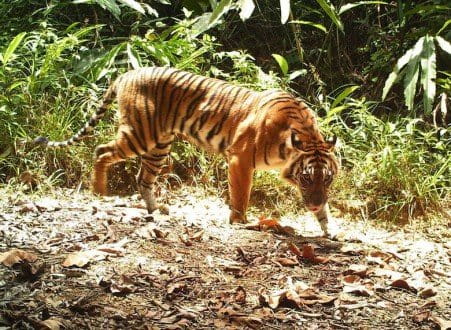
This story was first reported by Mongabay’s Indonesia team and published here on our Indonesian site on Dec. 15, 2019.
FEEDBACK: Use this form to send a message to the author of this post. If you want to post a public comment, you can do that at the bottom of the page.








